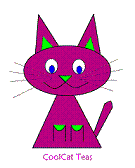December 8, 2009
- Look. Before brewing, Snow Geisha is your average whole-leaf white tea, with one addition: dried cherries. This made me a bit nervous, since I don't usually like cherries. After brewing (probably thanks to those same cherries) it's a lovely clear pinkish-orange, with its only marring factor a large amount of sediment in the bottom. Does anyone know what this sediment is? I don't.
- Smell. To me, Snow Geisha smelled like cherries, or worse, like artificial cherry flavorings. I could not smell the tea at all.
- Drink the steam. Strangely, when drinking the steam, I detected hardly any cherry -- just a sweet white tea.
- Sip. The basenote proved to be a sort of lemon-sour, fruity-sweet note, with little tea in the mix.
- Slurp. Perfect! Strong cherries first, then strong tea. Will the two ever get combined?
- Gulp. The texture is weak, non-assertive, and watery. Not necessarily bad, though, for a fruity white tea like Snow Geisha.
- Think. Snow Geisha was fairly good, but a little too weak and wishy-washy. (Look at me, accusing a liquid of being too wishy-washy.) Perhaps if it was brewed longer than the 3:30 timing we went by, it would improve. Or it could be a good base for adding lemon, sugar, or cream -- perhaps a fine tea for a little girl's tea party, since it's sweet, not very tea-tasting, and would be good with the requisite "stuff" in it. Today was another Testaments and Tea day, so we read from Psalm 2. "Why do the nations rage, and the peoples plot in vain?" We are looking for Messianic OT prophesies quoted in the NT.
CoolCat
